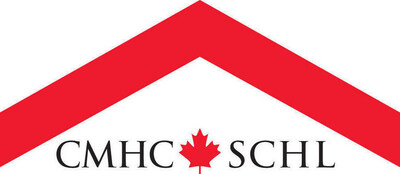ASHFORD HOSPITALITY TRUST ANNOUNCES DETAILS FOR REVERSE STOCK SPLIT
DALLAS, Oct. 15, 2024 /PRNewswire/ — Ashford Hospitality Trust, Inc. AHT (“Ashford Trust” or the “Company”) announced today that its Board of Directors unanimously approved a reverse split of the Company’s common stock at a ratio of 1-for-10.
As of the effective date of the reverse split, each share of the Company’s issued and outstanding common stock and equivalents will be converted into 1/10th of a share of the Company’s common stock. The reverse stock split will become effective as of the close of business on October 25, 2024 and the common stock is anticipated to commence trading on the New York Stock Exchange (the “NYSE”) on October 28, 2024 on the split-adjusted basis. The foregoing actions have been duly approved by the Company’s Board of Directors pursuant to the Maryland General Corporation Law and no stockholder approval is required.
As a result of the reverse stock split, the number of outstanding shares of common stock will be reduced from approximately 54.6 million shares to approximately 5.5 million shares. The Company will not issue fractional shares. Instead, any fractional shares resulting from the reverse stock split will be rounded down to the nearest full share, sold in the open market and the proceeds from such sales will be distributed to the applicable stockholder in cash. In addition, the common stock will trade under a new CUSIP number. The reverse stock split will affect all stockholders uniformly and will not affect any stockholder’s ownership percentage of shares of the Company’s common stock, except for minor changes resulting from the payment of cash for fractional shares. Ashford Trust’s stockholders should contact their broker or Ashford Trust’s transfer agent, Computershare, at (800) 546-5141, for any necessary assistance relating to the reverse stock split.
The purpose of the reverse stock split is to raise the per share trading price of the Company’s common stock to regain compliance with the minimum $1.00 continued listing requirement for the listing of its common stock on the NYSE. The Company also intends to effect a reverse split of the partnership units of Ashford Hospitality Limited Partnership the Company’s operating partnership (“Ashford Trust OP”), at a ratio of 1-for-10, effective October 25, 2024. As a result of such reverse split, the number of outstanding partnership units of Ashford Trust OP will be reduced from approximately 2.1 million units to approximately 0.2 million units.
Ashford Hospitality Trust is a real estate investment trust (REIT) focused on investing predominantly in upper upscale, full-service hotels.
Forward-Looking Statements
Certain statements and assumptions in this press release contain or are based upon “forward-looking” information and are being made pursuant to the safe harbor provisions of the federal securities regulations. Forward-looking statements are generally identifiable by use of forward-looking terminology such as “may,” “will,” “should,” “potential,” “intend,” “expect,” “anticipate,” “estimate,” “approximately,” “believe,” “could,” “project,” “predict,” or other similar words or expressions. Additionally, statements regarding the following subjects are forward-looking by their nature: our business and investment strategy; anticipated or expected purchases, sales or dispositions of assets; our projected operating results; completion of any pending transactions; our plan to pay off strategic financing; our ability to restructure existing property-level indebtedness; our ability to secure additional financing to enable us to operate our business; our understanding of our competition; projected capital expenditures; the impact of technology on our operations and business; the risk that noncompliance with NYSE continued listing standards may impact the Company’s results of operations, business operations and reputation and the trading prices and volatility of the Company’s common stock; and the Company’s ability to regain compliance with the NYSE continued listing standards. Such forward-looking statements are based on our beliefs, assumptions, and expectations of our future performance taking into account all information currently known to us. These beliefs, assumptions, and expectations can change as a result of many potential events or factors, not all of which are known to us. If a change occurs, our business, financial condition, liquidity, results of operations, plans, and other objectives may vary materially from those expressed in our forward-looking statements. You should carefully consider this risk when you make an investment decision concerning our securities. These and other risk factors are more fully discussed in the Company’s filings with the SEC.
The forward-looking statements included in this press release are only made as of the date of this press release. Investors should not place undue reliance on these forward-looking statements. We will not publicly update or revise any forward-looking statements, whether as a result of new information, future events or circumstances, changes in expectations or otherwise except to the extent required by law.
![]() View original content:https://www.prnewswire.com/news-releases/ashford-hospitality-trust-announces-details-for-reverse-stock-split-302276995.html
View original content:https://www.prnewswire.com/news-releases/ashford-hospitality-trust-announces-details-for-reverse-stock-split-302276995.html
SOURCE Ashford Hospitality Trust, Inc.
Market News and Data brought to you by Benzinga APIs
© 2024 Benzinga.com. Benzinga does not provide investment advice. All rights reserved.
Exxon seeks buyers for portion of assets in North Dakota's Bakken shale
By Shariq Khan
NEW YORK (Reuters) – Top U.S. oil producer Exxon Mobil Corp plans to sell a portion of its assets in North Dakota’s Bakken shale formation, the company told Reuters on Tuesday.
Following a wave of megamergers in U.S. shale patches, oil producers are reviewing their portfolios to decide which assets remain core to their strategy and which to divest.
“ExxonMobil is exploring market interest for select assets in the Bakken Shale Play, which includes approximately 137 operated wells and 676 non-operated and royalty wells across 49,000 net acres in North Dakota”, a company spokesperson said in response to Reuters questions.
The planned sale could fetch upwards of $500 million, two sources briefed on it told Reuters. They said it was part of Exxon’s efforts to focus on assets with the highest growth potential after a $60 billion takeover of rival Pioneer Natural Resources in May.
The sources requested anonymity as they are not authorized to speak publicly.
The decision aligns with a company strategy to continually evaluate its portfolio, Exxon said. The company declined to comment on the valuation, noting it is a corporate practice not to share such information.
A large portion of the land on sale is undeveloped, the sources said, which could make it attractive to potential buyers, both as it bolsters their land banks at a time when increased scale is important, but also as they may be able to boost output through future drilling.
Exxon is one of the top producers in the Bakken, the third largest oil-producing region in the U.S., with the company’s total production from the region at over 100,000 boepd, according to energy data provider Rextag.
Exxon said it will continue to invest in shale production in North Dakota as part of its long-term strategy.
This year, Exxon launched an auction to sell conventional drilling assets in the Permian basin, Reuters reported in June.
(Reporting by Shariq Khan in New York; Editing by David Gregorio)
History Says Small-Cap Growth Stocks Could Soar: Here Are 2 to Buy Now
We’re over a year into a new bull market, but contrary to previous market cycles, small-cap stocks are not performing nearly as well as large-cap ones.
Small caps have historically trounced the return of the S&P 500 coming out of bear markets, but since the end of the most recent downturn in 2022, the small-cap focused Russell 2000 is up 24%, while the large-cap weighted S&P 500 is up 50%. This runs counter to the Russell 2000‘s performance in previous bull markets. In the five-year period following the 2002 and 2008 bear markets, the Russell 2000 outperformed the S&P 500 by an average of 61%.
The returns of different asset classes and even specific industries can follow patterns that are tied to broader economic trends, such as interest rate cycles or consumer spending patterns. But if a company shows strong growth, its share price will certainly climb over the long term.
Small-cap stocks will have their day in the sunshine again. These are relatively small companies that have a market capitalization (the share price multiplied by total shares outstanding) below $2 billion with lots of room to expand in their respective industries. To aid you in your search, here are two promising stocks to consider buying today.
1. SoundHound AI
The rapid adoption of artificial intelligence (AI) is changing how people interact with devices — even their cars. SoundHound AI (NASDAQ: SOUN) is still a small company but is emerging as a leader in voice recognition technology. It is poised for substantial growth with over 155 patents and an impressive list of customers that includes major brands in the restaurant, retail, and auto industries.
SoundHound Chat AI is already providing conversational voice assistance in many devices. Its voice recognition technology combines with leading large language models like OpenAI’s ChatGPT to deliver comprehensive answers to questions. Validation of its technology can be seen in its growth so far, with revenue up 54% year over year in the second quarter.
The company is looking to expand across several industries with its technology, including healthcare and insurance. It just bought a leading enterprise software provider, Amelia, for $80 million to accelerate its market expansion, and it also has a valuable partnership with AI chip leader Nvidia to provide generative-AI chat capabilities in cars powered by Nvidia DRIVE.
For investors looking for a small-cap stock to hold for wealth-building return potential, SoundHound looks very promising. The stock has been quite volatile over the last few years, but it has a market cap of just $1.7 billion, which could significantly undervalue its opportunity in a generative AI market that Statista projects to reach $356 billion by 2030.
2. Archer Aviation
Another market ripe for big returns is the burgeoning air taxi market. This is a small but fast-growing field that Morgan Stanley projects will reach $1 trillion by 2040. Archer Aviation (NYSE: ACHR) has a market cap of just $1.1 billion, and several recent developments are pointing to a bright future.
Archer is not generating any revenue yet, since it is currently waiting on final certification from the Federal Aviation Administration (FAA) to start operating, but it is getting close. The company has already received certification to operate commercial flights so it can prepare to launch its Midnight aircraft for major airlines.
Once the certification process is completed, Archer should move rapidly. Earlier this year, it signed a memorandum of understanding to develop electric air-taxi networks in California for Southwest Airlines. It also has an agreement for the conditional purchase of up to $1 billion worth of aircraft by United Airlines.
Archer also has a purchase agreement of up to $580 million worth of aircraft by Future Flight Global with an initial deposit already paid.
Those developments come on top of two contracts it signed with the U.S. Air Force in August 2023 worth up to $142 million. The Department of Defense also recently approved Midnight’s airworthiness for the military, further validating Archer’s opportunity.
To pay manufacturing costs, the company has a contract with Stellantis to provide about $400 million of funding. This will allow it to cover labor costs at its Georgia factory through 2030. All these developments are pointing to a bright future for Archer Aviation, and investors have the chance to get in while the stock is down.
Should you invest $1,000 in SoundHound AI right now?
Before you buy stock in SoundHound AI, consider this:
The Motley Fool Stock Advisor analyst team just identified what they believe are the 10 best stocks for investors to buy now… and SoundHound AI wasn’t one of them. The 10 stocks that made the cut could produce monster returns in the coming years.
Consider when Nvidia made this list on April 15, 2005… if you invested $1,000 at the time of our recommendation, you’d have $826,069!*
Stock Advisor provides investors with an easy-to-follow blueprint for success, including guidance on building a portfolio, regular updates from analysts, and two new stock picks each month. The Stock Advisor service has more than quadrupled the return of S&P 500 since 2002*.
*Stock Advisor returns as of October 14, 2024
John Ballard has positions in Nvidia and SoundHound AI. The Motley Fool has positions in and recommends Nvidia. The Motley Fool recommends Southwest Airlines and Stellantis. The Motley Fool has a disclosure policy.
History Says Small-Cap Growth Stocks Could Soar: Here Are 2 to Buy Now was originally published by The Motley Fool
Why Semiconductor Stocks Micron, Applied Materials, and KLA Corporation Plunged Today
Shares of memory leader Micron (NASDAQ: MU), Applied Materials (NASDAQ: AMAT), and KLA Corporation (NASDAQ: KLAC) plunged on Tuesday, down 4.3%, 10.9%, and 15.5%, respectively, as of 3:28 p.m. ET.
Semiconductor stocks largely sold off across the board today after equipment leader ASML Holdings (NASDAQ: ASML) accidentally leaked its third-quarter results and outlook, which were supposed to be published tomorrow.
The results and guidance were highly disappointing, sending fears across the sector.
ASML disappoints on a “slower than expected” recovery
In the leaked press release, ASML showed 11.2% revenue growth and 9.1% earnings-per-share (EPS) growth, which aren’t terrible growth figures by any means, with the top line exceeding the company’s guidance last quarter.
However, the bookings figure and outlook for 2025, also contained in the press release, were more worrisome. Net bookings, which reflect revenue plus or minus the change in orders in backlog, were only 2.6 billion euros (~$2.8 billion), far below expectations of 5.39 billion euros (~$5.87 billion).
Moreover, management gave preliminary revenue guidance for 2025 of between 30 billion and 35 billion euros (~$33 billion to $38 billion). While that still portends mid-teens growth above expected 2024 figures of 28 billion euros (~$30 billion), it was below the 36.3 billion euros (~$39.5 billion) analysts were expecting.
Management noted in the press release:
While there continue to be strong developments and upside potential in AI, other market segments are taking longer to recover. It now appears the recovery is more gradual than previously expected. This is expected to continue in 2025, which is leading to customer cautiousness.
ASML is likely referring to Intel, which has seen lower near-term demand, and Samsung, which has been beset by operational issues and is pushing out its fab expansions. ASML management also noted limited capacity additions for DRAM memory suppliers, as most are converting unused equipment for non-artificial intelligence (AI) memory to production lines for HBM and DDR-5 for AI.
The semiconductor capital equipment sector is very linked. So, if a large fab is pushed out, not only will ASML see slower growth, but so will the etch and deposition equipment supplied by Applied Materials and the metrology and inspection equipment provided by KLA Corporation along with it. Thus, it’s no surprise to see each of those stocks sell off to ASML today by a similar amount.
Micron is also down, given that ASML indicated softer end-demand across non-AI markets. However, it may also be positive for Micron that memory rivals are scaling back their investments in memory capacity. Unlike that of advanced logic chips, memory pricing can fluctuate a lot based on supply and demand. So, the discipline to pull back investments could be a good thing for memory pricing. That’s likely why Micron’s stock is holding up better than the others.
The sell-off may be a good opportunity
This sell-off may be an opportunity for chip investors since the recovery in non-AI markets is very likely to happen at some point, even if a full recovery doesn’t happen as fast as some forecast. After all, the midpoint of ASML’s guidance still points to 16% growth next year. And pushing fab buildouts from 2025 to 2026 should entail more sustained growth beyond 2025.
It seems that 2024 corporate budgets may have been dominated by expensive AI spending, crowding out refreshes of non-AI servers and PCs. However, this aging equipment will have to be refreshed eventually, especially since Windows 10 support will be phased out in October 2025. Furthermore, as more AI-enabled devices come to market, that should be a boon for chip content across all devices in PCs, smartphones, and auto markets that are still lagging today.
So, for those investors with a long-term view, this sell-off based on the medium-term outlook may be an opportunity to pick up high-quality semiconductor names, such as these three, for the long haul.
Don’t miss this second chance at a potentially lucrative opportunity
Ever feel like you missed the boat in buying the most successful stocks? Then you’ll want to hear this.
On rare occasions, our expert team of analysts issues a “Double Down” stock recommendation for companies that they think are about to pop. If you’re worried you’ve already missed your chance to invest, now is the best time to buy before it’s too late. And the numbers speak for themselves:
-
Amazon: if you invested $1,000 when we doubled down in 2010, you’d have $21,122!*
-
Apple: if you invested $1,000 when we doubled down in 2008, you’d have $43,756!*
-
Netflix: if you invested $1,000 when we doubled down in 2004, you’d have $384,515!*
Right now, we’re issuing “Double Down” alerts for three incredible companies, and there may not be another chance like this anytime soon.
*Stock Advisor returns as of October 14, 2024
Billy Duberstein and/or his clients have positions in ASML, Applied Materials, Intel, KLA, and Micron Technology. The Motley Fool has positions in and recommends ASML and Applied Materials. The Motley Fool recommends Intel and recommends the following options: short November 2024 $24 calls on Intel. The Motley Fool has a disclosure policy.
Why Semiconductor Stocks Micron, Applied Materials, and KLA Corporation Plunged Today was originally published by The Motley Fool
Should You Buy Nvidia Stock Before Oct. 17?
There’s no denying the growing chorus of experts suggesting that artificial intelligence (AI) will change just about everything. Some veteran analysts and tech aficionados have gone so far as to suggest we’re in the throes of the fourth industrial revolution. These sophisticated algorithms have the potential to dramatically increase productivity by automating time-consuming processes and streamlining a great many tasks.
There are plenty of companies that have profited from the accelerating adoption of AI, but arguably none more than Nvidia (NASDAQ: NVDA). The company pioneered the graphics processing units (GPUs) that provide the computational horsepower that makes AI possible. Simply put, these computer chips can conduct lightning-fast mathematical calculations, which enables the creation and running of complex AI models.
There have been any number of catalysts that sent the chipmaker higher, and this Thursday could mark yet another. Let’s look at what’s coming down the pike and whether it could signal (another) big move for Nvidia stock.
The writing is on the wall
Taiwan Semiconductor Manufacturing (NYSE: TSM), commonly referred to as TSMC, is the world’s largest contract semiconductor foundry and is responsible for the vast majority of AI chips, producing an estimated 90% of the world’s most advanced processors. Nvidia ranks among TSMC’s biggest customers, accounting for about 11% of the company’s sales in 2023 — though that number is likely higher now. As such, TSMC’s performance will likely be a canary in the coal mine, providing insight into the trajectory of Nvidia’s results.
TSMC is scheduled to release its third-quarter financial report on Thursday, and the available evidence suggests the results will be robust.
The company provides a monthly revenue report, so we already have a pretty fair idea of how things are going. For the three months ended Sept. 30, the company generated revenue of NT$759.7 million (roughly $23.6 million), which represents growth of roughly 39% year over year, based on current exchange rates. For context, that’s slightly ahead of analysts’ consensus estimates of $23.09 billion, or growth of about 35%. It’s also ahead of TSMC’s own forecast, which called for $22.8 billion at the midpoint of its guidance.
The fact that TSMC will likely surpass the high end of its own guidance suggests the demand for chips that process AI remains robust — which bodes well for Nvidia.
There’s more. Nvidia CEO Jensen Huang has been making the rounds on financial media, providing updates regarding the company’s next-generation Blackwell architecture. “Blackwell is in full production, Blackwell is as planned, and demand for Blackwell is insane,” the chief executive said in a recent interview. Analysts from Morgan Stanley are projecting that Nvidia will generate $10 billion from Blackwell chips during the company’s fiscal 2025 fourth quarter, which ends in late January.
Should you buy Nvidia stock before Oct. 17?
The available evidence suggests that demand for AI remains robust, and depending on what TSMC executives have to say on Thursday, it could potentially act as a catalyst for Nvidia — but should investors buy the stock before Oct. 17?
Truth be told, it really doesn’t matter much if you buy Nvidia stock before or after TSMC reports. The stock closed at a new record high on Monday, pushing Nvidia’s market cap to $3.4 trillion, bringing its gains over the past year to more than 200% (as of this writing). Taking a step back, the stock is up 32,770% over the past decade, which helps illustrate the benefit of buying quality stocks and holding them for the long term.
To be clear, Nvidia already has plenty of growth built in. The stock is currently trading for 65 times earnings, which is enough to send some investors running for the exits. However, analysts’ consensus estimates are calling for earnings per share of $4.04 in Nvidia’s fiscal 2026, which kicks off in January. That works out to a forward multiple of 34, which suggests the valuation isn’t as egregious as it first appears.
Furthermore, most experts believe it’s still early days for the adoption of AI. The market value of generative AI is expected to be between $2.6 trillion and $4.4 trillion annually over the next few years. As new applications emerge and the technology advances, those estimates could well be conservative.
Given the company’s pivotal position in the AI revolution and its robust growth prospects, it doesn’t matter if you buy Nvidia stock before or after Oct. 17 — as long as you buy it.
Should you invest $1,000 in Nvidia right now?
Before you buy stock in Nvidia, consider this:
The Motley Fool Stock Advisor analyst team just identified what they believe are the 10 best stocks for investors to buy now… and Nvidia wasn’t one of them. The 10 stocks that made the cut could produce monster returns in the coming years.
Consider when Nvidia made this list on April 15, 2005… if you invested $1,000 at the time of our recommendation, you’d have $826,069!*
Stock Advisor provides investors with an easy-to-follow blueprint for success, including guidance on building a portfolio, regular updates from analysts, and two new stock picks each month. The Stock Advisor service has more than quadrupled the return of S&P 500 since 2002*.
*Stock Advisor returns as of October 14, 2024
Danny Vena has positions in Nvidia. The Motley Fool has positions in and recommends Nvidia and Taiwan Semiconductor Manufacturing. The Motley Fool has a disclosure policy.
Should You Buy Nvidia Stock Before Oct. 17? was originally published by The Motley Fool
JPMorgan Sells $8 Billion of Corporate Bonds After Earnings
(Bloomberg) — JPMorgan Chase & Co. sold $8 billion of US investment-grade corporate bonds on Tuesday after posting earnings on Friday, setting the stage for a potential flood of issuance from top Wall Street banks.
Most Read from Bloomberg
The biggest lender in the US by assets sold the bonds in four parts, according to a person with knowledge of the matter. Earlier discussions with investors were for a size between $6 billion and $7 billion, according to separate people familiar with the matter. The bank raked in about $34 billion in orders, allowing it to increase the final deal size.
The longest portion of the offering, an 11-year fixed-to-floating-rate security, yields 0.92 percentage point above Treasuries, after initial discussions of around 1.15 to 1.20 percentage point, one of the people said, declining to be identified discussing private details.
A spokesperson for JPMorgan declined to comment.
The bond sale comes after the bank reported a surprise gain in net interest income for the third quarter and raised its forecast for the key revenue source, even amid expectations that US interest rates will continue to fall.
JPMorgan, along with Goldman Sachs Group Inc., Bank of America Corp. and Citigroup Inc. posted equities and fixed-income trading hauls that surpassed analyst estimates for the three months ended Sept. 30. For each firm’s stock traders, it was the best third-quarter on record.
Top banks on Wall Street could borrow $20 billion to $24 billion after they post results, more than the $15 billion they’ve typically raised in October over the prior decade, JPMorgan credit analyst Kabir Caprihan wrote in a research note last week. The lenders are taking advantage of tight credit spreads and strong demand from investors.
JPMorgan is the sole bookrunner on its bond sale and intends to use the proceeds for general corporate purposes, one of the people familiar said.
(Updates with final pricing details.)
Most Read from Bloomberg Businessweek
©2024 Bloomberg L.P.
MEDIA ADVISORY – FEDERAL GOVERNMENT TO MAKE HOUSING ANNOUNCEMENT IN CALGARY
CALGARY, AB, Oct. 15, 2024 /CNW/ – Media are invited to join George Chahal, Member for Calgary Skyview – on behalf of the Honourable Sean Fraser, Minister of Housing, Infrastructure and Communities, Mayor Gondek, and President and CEO of Calgary Housing, Sarah Woodgate.
|
Date: |
October 16, 2024 |
|
Time: |
11:30 a.m. MT |
|
Location: |
352 Falconridge Crescent NE |
|
Calgary AB, T3J 1H4. |
SOURCE Canada Mortgage and Housing Corporation (CMHC)

![]() View original content to download multimedia: http://www.newswire.ca/en/releases/archive/October2024/15/c2984.html
View original content to download multimedia: http://www.newswire.ca/en/releases/archive/October2024/15/c2984.html
Market News and Data brought to you by Benzinga APIs
© 2024 Benzinga.com. Benzinga does not provide investment advice. All rights reserved.
European Stocks Drop on Weak Earnings; Pound Falls: Markets Wrap
(Bloomberg) — European equities fell as weak luxury sector earnings added to negative sentiment around the profit outlook for the semiconductor industry. The pound slid as a drop in UK inflation spurred increased bets on interest-rate cuts.
Most Read from Bloomberg
The Stoxx 600 index retreated 0.4% after chipmaking machine giant ASML Holding NV extended losses following its profit warning on Tuesday. LVMH (MC.PA) and Salvatore Ferragamo SpA (S9L.SG) led the retreat in luxury stocks after weak updates, both slumping as much as 7%. US equity futures were little changed.
ASML’s slide sent ripples across the industry, resulting in more than $420 billion of market value loss for an index of US-traded chipmakers and the largest Asian stocks. Nvidia Corp. sank nearly 5% on Tuesday, after reaching a record close earlier this week.
While the weakness in names like Nvidia (NVDA) and ASML (ASML) has an impact on the broader market, Peter Fitzgerald, chief investment officer for macro and multi-asset at Aviva Investors, pointed to the strength of demand for artificial intelligence as well as supportive central bank policy.
“Our view is that there is enough underlying strength in markets,” he said. “Particularly with central banks on an easing path providing broad support.”
Sterling slid 0.6% to $1.2990, its lowest level since Aug. 20. Figures Wednesday showed consumer prices rose just 1.7% in September compared to a year earlier, less than forecast by economists. The data emboldened investors to bet on more aggressive easing from the Bank of England.
Bloomberg’s dollar index ticked higher after climbing to its strongest level in about two months after former President Donald Trump defended proposals to raise tariffs on foreign imports. Atlanta Fed President Raphael Bostic said he expects the US economy to slow this year but to remain robust, adding that the downward path for inflation could see some bumps. Treasury yields edged lower.
In Asia, a Bloomberg gauge of China’s property shares surged as much as 8.3% as markets prepared for a joint news conference to be held by government officials including the housing minister and central bank on Thursday.
Chinese stocks have whipsawed since late September, when a series of stimulus measures by the central bank unleashed a burst of optimism that has begun to unravel. Investors are watching to see if the authorities deploy greater firepower to bolster the economy.
“What is really key for European stocks is what happens to consumer sentiment and consumer spending in China,” said Lilian Chovin, head of asset allocation at Coutts. “To what extent the measures announced in China are effective at boosting consumer sentiment over there, because that’s what would really help autos, luxury goods and all those very Chinese sensitive sectors in Europe.”
The yen traded at around 149 per dollar after Bank of Japan Board Member Seiji Adachi emphasized the need for taking a gradual approach to raising the benchmark interest rate.
Key events this week:
-
Morgan Stanley earnings, Wednesday
-
ECB rate decision, Thursday
-
US retail sales, jobless claims, industrial production, Thursday
-
Fed’s Austan Goolsbee speaks, Thursday
-
China GDP, Friday
-
US housing starts, Friday
-
Fed’s Christopher Waller, Neel Kashkari speak, Friday
Some of the main moves in markets:
Stocks
-
The Stoxx Europe 600 fell 0.3% as of 9:37 a.m. London time
-
S&P 500 futures were little changed
-
Nasdaq 100 futures were little changed
-
Futures on the Dow Jones Industrial Average were little changed
-
The MSCI Asia Pacific Index fell 0.9%
-
The MSCI Emerging Markets Index fell 0.5%
Currencies
-
The Bloomberg Dollar Spot Index rose 0.1%
-
The euro fell 0.1% to $1.0879
-
The Japanese yen fell 0.1% to 149.38 per dollar
-
The offshore yuan rose 0.1% to 7.1277 per dollar
-
The British pound fell 0.6% to $1.2999
Cryptocurrencies
-
Bitcoin rose 1.1% to $67,192.49
-
Ether rose 1.6% to $2,612.59
Bonds
-
The yield on 10-year Treasuries declined two basis points to 4.01%
-
Germany’s 10-year yield declined three basis points to 2.19%
-
Britain’s 10-year yield declined seven basis points to 4.09%
Commodities
-
Brent crude fell 0.1% to $74.15 a barrel
-
Spot gold rose 0.6% to $2,677.53 an ounce
This story was produced with the assistance of Bloomberg Automation.
—With assistance from Kurt Schussler, Yuling Yang, Jake Lloyd-Smith, Zhu Lin, Winnie Hsu and Sujata Rao.
Most Read from Bloomberg Businessweek
©2024 Bloomberg L.P.










